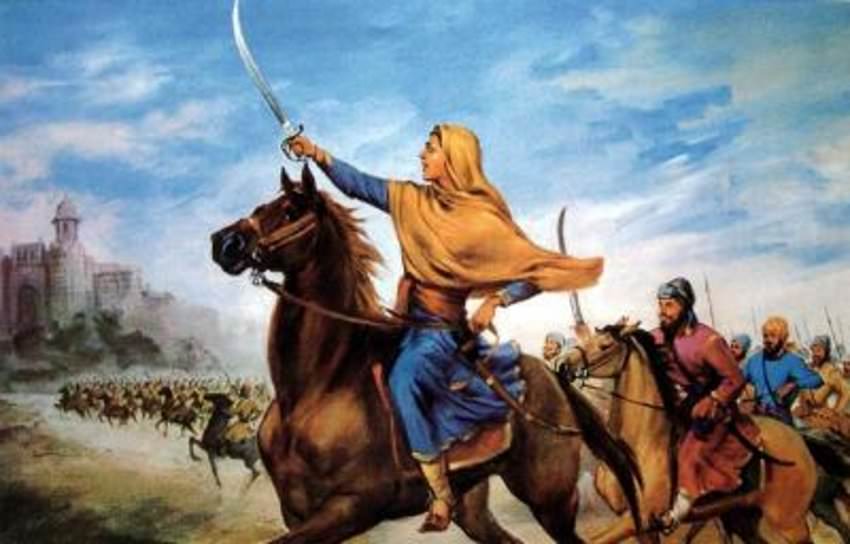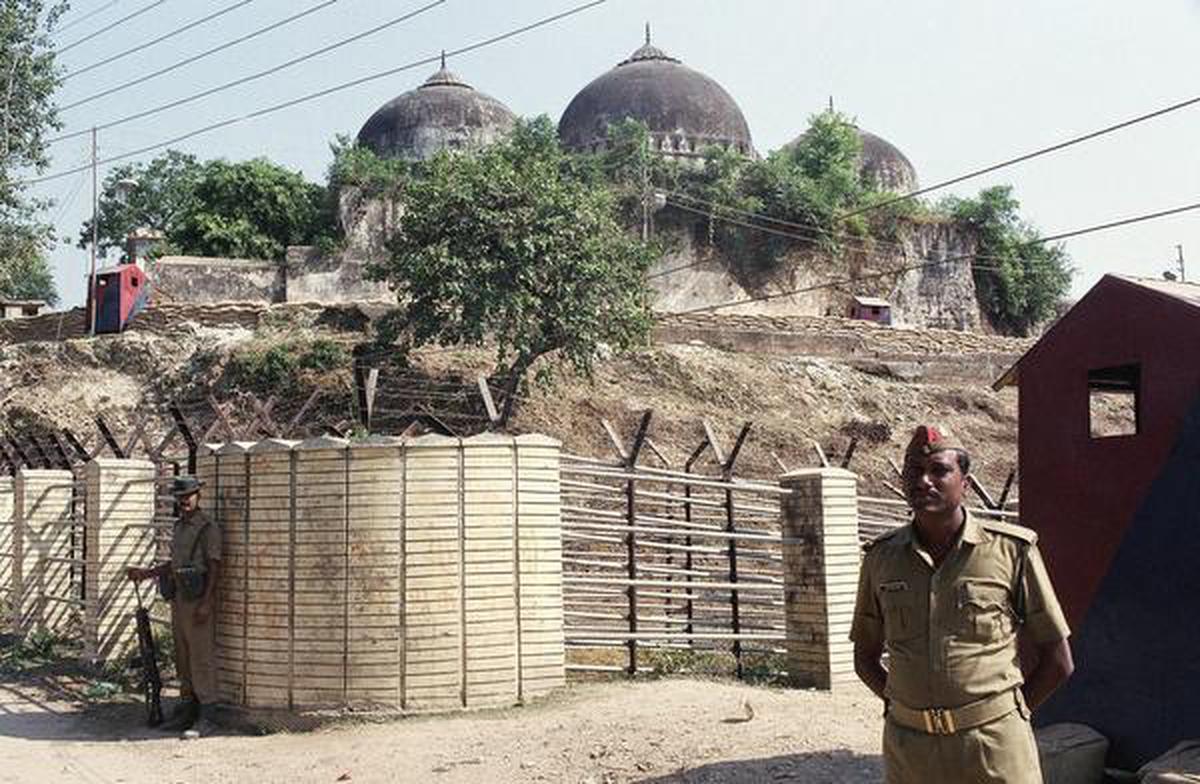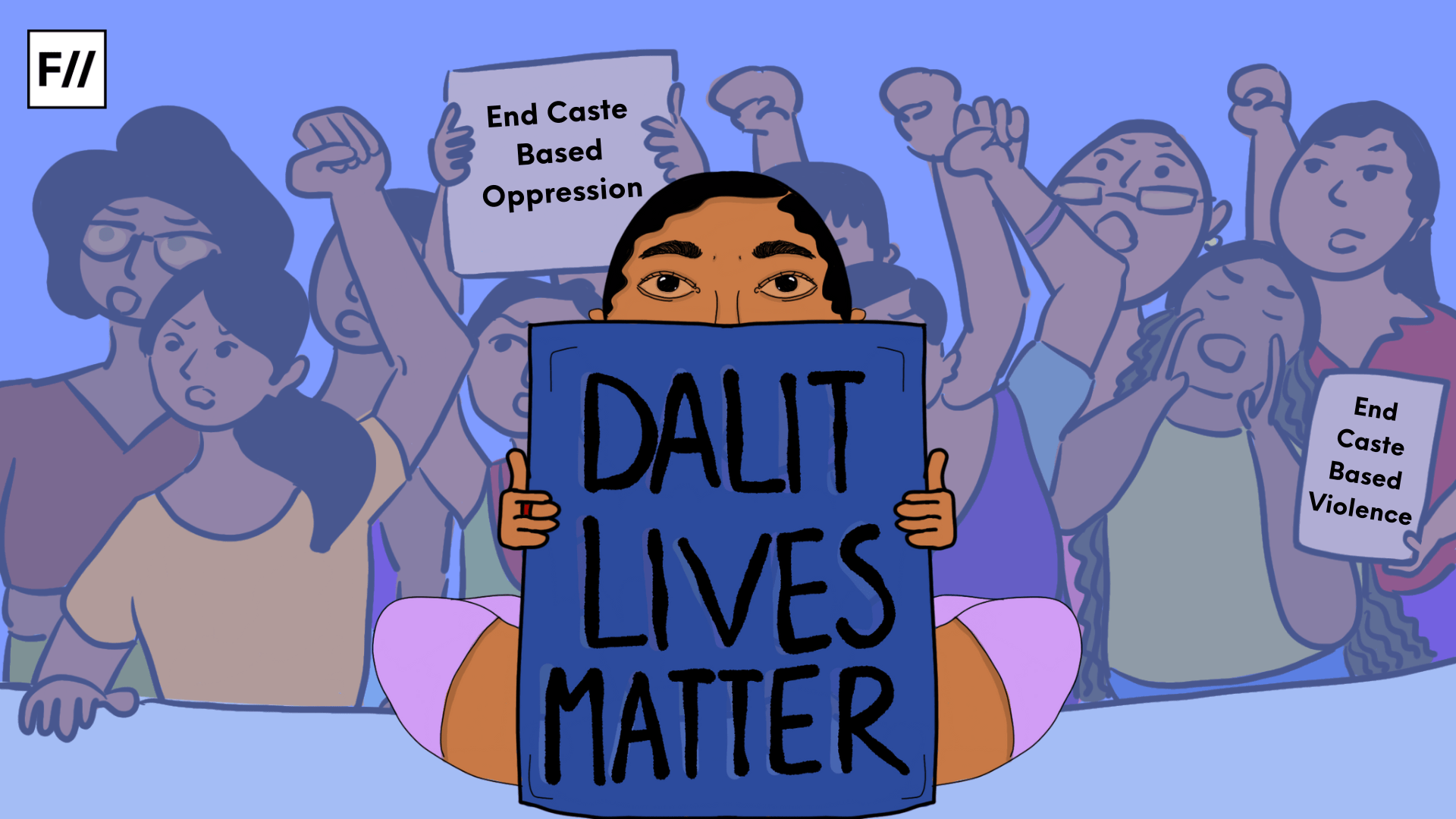When we think about warfare, our attention turns to the men involved. Perhaps because it is “an invention of men”, and thus the two are inevitably associated. But more conceivably, because history has largely been written for, by and about men.
These women epitomize feminism, particularly post-colonial feminism before the concepts existed. They did what they knew they should and could, with no regard for what was usually deemed their “place” in society.
Here’s a list of 5 of many medieval Indian women warriors:
1. Onake Obavva
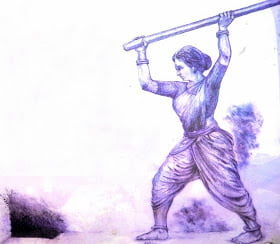
Image Credit: Umashree Raghunath
Chitradurga, a city located 200 kilometres northwest of Bengaluru, Karnataka, saw many rulers from the 16th to 19th centuries. Despite its rich past, Chitradurga has remained a lesser known part of Karnataka’s history.
During the reign of the last ruler of Chitradurga, the city was besieged by the troops of Hyder Ali, ruler of Mysore state in the 18th century. Onake’s victory occurred during one of Ali’s many attempted sieges. By chance, Ali saw a man entering the fort through an opening, and decided to send his soldiers through it.
Onake’s husband who usually guarded this opening was on a lunch break. Fortuitously, Onake went to fetch him water which was located near this crevice, where she saw Ali’s army attempting to enter. Obavva killed the armed with only a pestle—or Onake in Kannada, her namesake—and with her cunning.
She killed the first soldier and relocated his body, so the other troops would not be privy to her presence. She repeated this process till they were all slain. Unfortunately, she was found dead later that day for unknown reasons. Nonetheless, her actions saved Chitradurga Fort that day from Ali’s army, until his eventual success in 1779.
As ‘merely a guard’s wife’ with no warring experience saving an eminent fort, she has thus become a symbol of Kannada female pride. She has literally become the face of smashing the patriarchy, with an anti-harassment women’s group in Karnataka coining themselves the ‘obavva troupe’.
2. Bibi Dalair Kaur
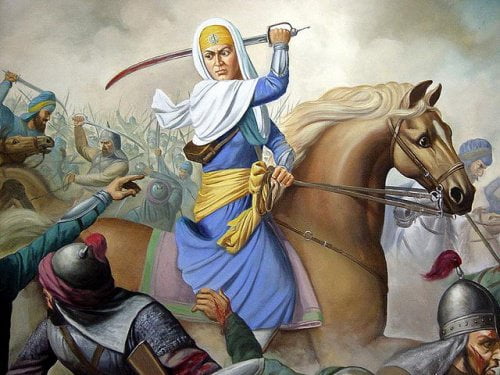
Image Credit: Pinterest
Her success occurred during a battle with Wajir Khan who was part of the Mughal Empire, and the Governor of Sirhind (now Fatehgarh Sahib, a town and sacred pilgrimage site for Sikhs).
Wajir Khan and his army broke through the walls of Sirhind fort faced with Bibi Dalair and her 100 armed women warriors. It is said that Khan, taken aback by this sight—in a classic paternalistic power move—began taunting the women. Khan yelled at his soldiers, “Cowards, are you afraid of women? They are gifts for you, capture them and do what you want with the rewards of your hunt”.
Bibi Dalair Kaur responded, “We are the hunters, not the hunted. Come forward and find out for yourself!” Khan’s soldiers advanced, but Kaur and her army succeeded in killing many, leaving the rest to retreat.
Sadly, Kaur and her warriors were eventually killed by cannon fire. Regardless, Bibi Dalair Kaur is considered a martyr among Sikhs and is certainly a glorious source of inspiration for feminists.
3. Rani Velu Nachiyar
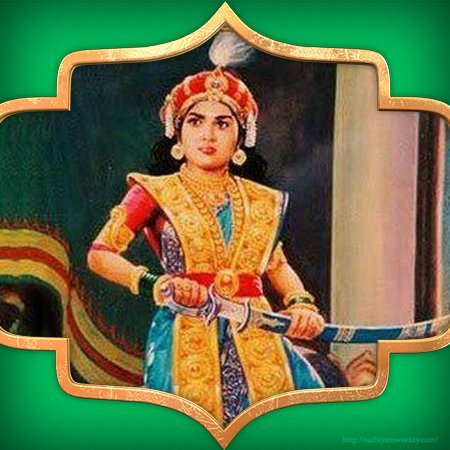
Image Credit: Bodahub
Rani Veeramangai Velu Nachiyar was the queen Shivagangai kingdom—now Madurai, Tamil Nadu—from 1769 to 1790. She is celebrated by Tamilians as Veeramangai, or brave woman, an apt moniker, as Rani was the first female Indian ruler to successfully revolt and triumph against the British empire.
The daughter of a royal family, Princess Velu was brought up as a male child would have been—it seems the family was already engaged in not subscribing to gender roles (a big deal for that time!). Velu’s parents ensured she was well trained and read; she spent countless hours training in weaponry, martial arts, and archery and studying French, English and Urdu.
In 1772, the British invaded Shivagangai, killing Velu’s husband and young daughter in the war for the Kalaiyar Koli Palace.
1780 was witness to the first recorded ‘suicide bombing’ in history, with which Velu struck back against the invaders. She had employed her intelligence gathering agents to find where the British stored their ammunition. A follower of Velu’s, Kuyili, doused herself in oil and set herself alight while walking into the storehouse, to dismantle their operation. Velu’s adopted daughter Udaiyaal, also martyred herself to detonate a British arsenal.
In honour of her, Velu formed a women’s army named Udaiyaal. Velu and her army defeated the British, regained Shivagangai, with Velu being reinstated as queen. Later, however, the Kingdom of Shivagangai was overtaken by the British East India Company upon her death.
An interesting testament to her everlasting valour: Professor A.L.I, a Tamil-American hip-hop artist, released a song dedicated to Velu Nachiyar titled Our Queen, from his 2016 album Tamilnatic.
4. Rani Abbakka Chowta

Image Credit: Hindu Jagruti
Rani Abbakka Chowta Queen of Ullal, hailed as one of the first female freedom fighters of India and as being “the only woman in history to confront, fight and repeatedly defeat the Portuguese”. She defended the region for 4 decades in the latter half of the 16th century.
Her family, the Chowtas, ruled over Ullal—now Mangalore—with Thirumala Raya III as its king. The Chowtas were a matrilineal dynasty. Abbakka, the niece of King Thirumala was hence his heir. This allowed the princess to receive a vast array of military training, giving her deep awareness of the threat the Portuguese posed, once she was Queen of Ullal.
Under the tutelage of Vasco da Gama, in 1498 the Portuguese became the first Europeans to find a sea route to India. From 1525 to 1579, Abbakkar led her army in shutting down a total of 6 attacks by the aggressors.
Her army and navy consisted of soldiers from all religions and castes: from the Mogaveeras, to Billava archers, to Mappilah oarsmen. In the Portuguese’s last attack, they finally managed to imprison Rani, only because they convinced her estranged husband to betray her for money. Abbakkar exemplifies ‘fight to the death’, starting a revolt in prison which led to her demise while trying to escape.
She was ferociously tenacious and intelligent, but little is written about her in history books. Fortunately, she is lives on in the folk culture of the Dakshin Kannada region, where they hold an annual celebration in her memory (Veera Rani Abbakka Utsava).
5. Nayakuralu Nagamma
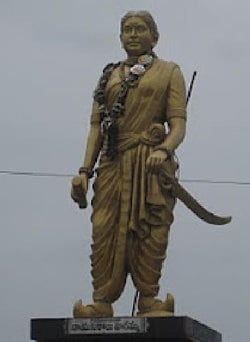
Image Credit: Chai Bisket
Nayakuralu Nagamma is argued to be one of the most powerful women in medieval India and the world. While bestowing upon her the label of ‘female pioneer’ is unquestionable, to distinguish her as an emblem of intersectional feminism is dubious.
Nagamma was from Karimnagar, one of 31 districts of Telangana. The daughter of a wealthy farmer, her family relocated to Palnadu, Andhra Pradesh where she attained the titles she is recognised for.
She became a significant character in the 12th-century epic war of Palnati Yudham, along with Bramha Naidu, the then minister of Palnadu. Nagamma rose to be considered as the world’s first woman minister and a renowned statesperson to King Nalagamaraju, who came to be the ruler of Palnadu. Only serving to strengthen her power as a leader, a minister of Palnadu, Minister Goppanna trained Nagamma in warfare crafts.
The history of Palnati Yudham is one of contention. However, the questionable nature of Nagamma’s claim as a feminist icon seems clearer. Along with King Nalagamaraju and his following, she opposed Brahma Naidu’s creation of Veera Vaishnavism which he created to dismantle Veera Saivism. He did this because he believed that “untouchables” should be provided equal status with the Sudras, which Veera Saivism did not.
Also Read: Uda Devi: Dalit Freedom Fighter In The 1857 Uprising | #IndianWomenInHistory
Featured Image Credit: Daughters of the Khalsa
This list is by no means comprehensive. If you think we left out an important person, please let us know in the comments section below.
